News Release 15-065
New paths to innovation and learning through DIY technologies
During Week of Making, renewed focus on the people who explore the frontiers of design thinking and STEM learning
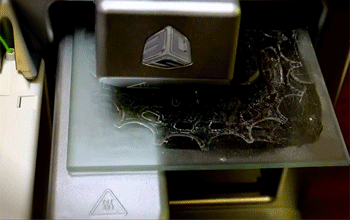
Additive manufacturing, the innovation behind 3-D printing, has revolutionized aspects of making.
June 12, 2015
This material is available primarily for archival purposes. Telephone numbers or other contact information may be out of date; please see current contact information at media contacts.
Today, the nation of makers proves it has no borders, as do-it-yourself engineers, inventors and tinkerers of all ages and backgrounds converge at the National Maker Faire.
The National Science Foundation (NSF) directly supports many of the exhibitors--known as "makers"--participating in the faire, with even more exhibitors using NSF-funded tools and technologies, such as 3-D printing and computer-aided design.
The faire is a kickoff event for the National Week of Making June 12-18, which celebrates the growing wave of innovators enabled by access to new resources and knowledge, known as the maker movement.
"NSF invests in the heart of the maker movement: the innately curious, creative and self-motivated people who engage in STEM practices and learning through various forms of making," said Pramod Khargonekar, NSF assistant director for engineering. "We embrace a broad spectrum of makers, including those who develop the innovative new designs, ideas, tools and technologies that enable making activities."
A theme of the Week of Making is the diversity among makers. The faire alone will have representation from minority-serving institutions, tribal colleges, and hispanic-serving institutions. Broadening participation in science and engineering fields is a priority for NSF.
Making connections
In 2015 alone, NSF has provided vital support to fundamental science, engineering and education research, citizen science, and the integration of research and education activities--all of which form the foundation for makers.
Last week, NSF invited the research community to submit early concept grant proposals to conduct exploratory work on untested, but potentially transformative ideas or approaches that advance the frontier of knowledge with respect to STEM learning and design thinking.
These projects could explore a range of making-related aspects. They could leverage existing making knowledge to explore new ideas and models of formal and informal STEM learning, reveal the processes and potential benefits of learning (e.g., design thinking) in the maker context, and/or investigate and test the efficacy of new approaches to design and innovation enabled by maker spaces and practices.
"We believe there are deep connections between STEM learning and maker activities, but how do we begin to measure those connections?" said Joan Ferrini-Mundy, NSF assistant director for the Directorate for Education and Human Resources. "Even more importantly, how might we use this knowledge to successfully increase retention and broaden participation in STEM for students and faculty?"
NSF seeks proposal ideas that transcend typical approaches to begin to answer these pivotal questions.
To further aid the conversation among the learning, research and making communities, NSF will sponsor a Maker Summit in the D.C. metro area in fall 2015, which will be organized by the American Society for Engineering Education.
The summit is intended to serve as a catalyst to establish networks and communication channels among stakeholders in the maker community. The event will draw dozens of participants from five different sectors: informal learning in museum/library settings; making/hacking in community spaces; university maker spaces; engineering and science researchers who engage making; and education researchers who engage in making.
An innovation spectrum
This year's National Maker Faire, which is being held in Washington, D.C., builds upon the 2014 White House Maker Faire.
At this year's expanded event, NSF joins other federal agencies, companies, academic institutions, nonprofits and communities nationwide in an effort to provide students and entrepreneurs access to tools, spaces and mentors to participate in making and to study the impact of making on learning.
NSF-funded projects will also be featured in a special "government makes" showcase, where federally funded makers will provide demonstrations. Making may include interests as diverse as 3-D printing, customized robotics, remixing electronics and expressions of STEM and art, so long as it is grounded in open access to tools and expertise.
Beyond D.C., NSF-funded making and making research activities are happening now all across the country.
For example:
- Neil Gershenfeld, creator of fab lab at MIT, leads a mobile fabrication laboratory that is a model for makerspaces all over the world. Hear more from Gershenfeld in an NSF Twitter chat and video soundbites.
- Erica Halverson, University of Wisconsin, studies how and what people learn from participation in makerspaces and explores the features of those environments that can be leveraged to better promote learning.
- Amy Hurst, University of Maryland, Baltimore County, uses 3-D printing in special education classrooms to allow students, instructors, and therapists to quickly design and produce custom tangible learning aids and assistive technologies.
- Shawn Jordan and Micah Lande at Arizona State University study the educational pathways of adult and young makers. Shawn Jordan also creates Rube Goldberg machines, elaborate contraptions that perform simple tasks via complicated processes.
- Lee Martin, University of California-Davis, investigates youth participation in the Maker Movement.
- Morgan Sinko, University of Rochester engineering student, is building a virtual reality suit that allows users to "touch" computer-generated images.
- Ben Shapiro, Brian Gravel and Chris Rogers, Tufts University, helped turn a near-abandoned woodworking shop into a "maker space" at Malden High School while exploring the role of making in urban high schools.
Are you a maker? Participate in the Week of Making.
Tweet a photo or video of your creation using the hashtags #WeekofMaking or #nationofmakers.
Makers with 3-D printers: Instructions for printing a 3-D model of the NSF logo are now available on NSF.gov. Watch a fast-motion version of the logo being printed.
This morning the White House released a fact sheet listing Making-related current and future activities being undertaken by government, private-sector and community organizations.
-NSF-
-
Paint-by-numbers social art project helps students practice the lab technique pipetting.
Credit and Larger Version -
Engineering students are building a virtual reality suit that lets users "touch" images.
Credit and Larger Version -
Students in the NSF-funded Tribal Colleges and Universities Program with handmade guitars.
Credit and Larger Version -
Custom-printed components enable makers to build machines to their own specifications.
Credit and Larger Version -
Makers often work in makerspaces and hold maker events to share what they've created and learned.
Credit and Larger Version -
Electronics combine with 3-D printed parts to form innovative STEM learning projects.
Credit and Larger Version
Media Contacts
Sarah Bates, NSF, (703) 292-7738, email: sabates@nsf.gov
Maria C. Zacharias, NSF, (703) 292-8454, email: mzachari@nsf.gov
Related Websites
National Maker Faire: http://nationalmakerfaire.com/
Advanced Manufacturing: Made to Order: http://www.nsf.gov/eng/special/madetoorder/
Engineering for all: http://www.nsf.gov/discoveries/disc_summ.jsp?cntn_id=131735&org=NSF
Learning through making: http://www.nsf.gov/discoveries/disc_summ.jsp?cntn_id=131761&org=NSF
Dear Colleague Letter: Enabling the Future of Making to Catalyze New Approaches in STEM Learning and Innovation: http://www.nsf.gov/pubs/2015/nsf15086/nsf15086.jsp?org=NSF
The U.S. National Science Foundation propels the nation forward by advancing fundamental research in all fields of science and engineering. NSF supports research and people by providing facilities, instruments and funding to support their ingenuity and sustain the U.S. as a global leader in research and innovation. With a fiscal year 2023 budget of $9.5 billion, NSF funds reach all 50 states through grants to nearly 2,000 colleges, universities and institutions. Each year, NSF receives more than 40,000 competitive proposals and makes about 11,000 new awards. Those awards include support for cooperative research with industry, Arctic and Antarctic research and operations, and U.S. participation in international scientific efforts.
Connect with us online
NSF website: nsf.gov
NSF News: nsf.gov/news
For News Media: nsf.gov/news/newsroom
Statistics: nsf.gov/statistics/
Awards database: nsf.gov/awardsearch/
Follow us on social
Twitter: twitter.com/NSF
Facebook: facebook.com/US.NSF
Instagram: instagram.com/nsfgov



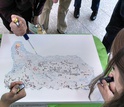
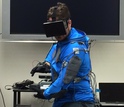
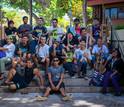
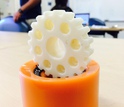
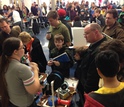
_r.jpg)